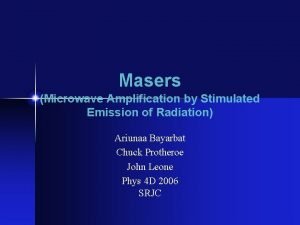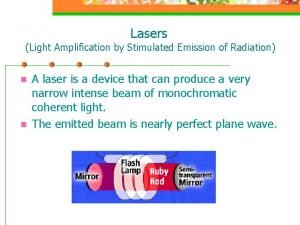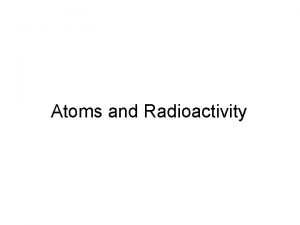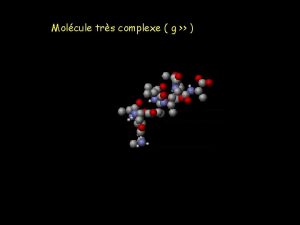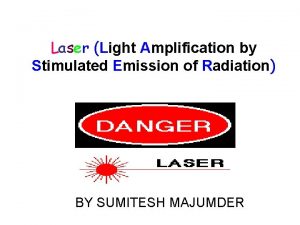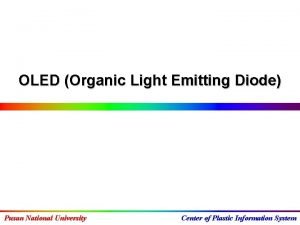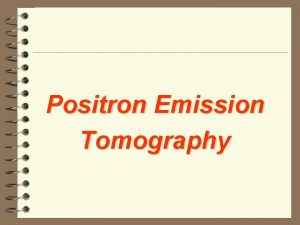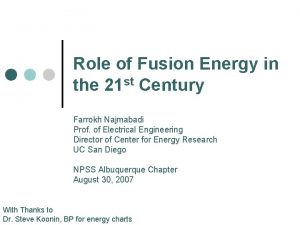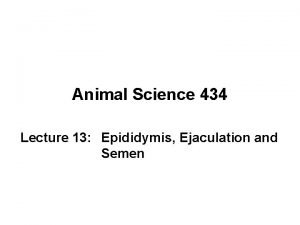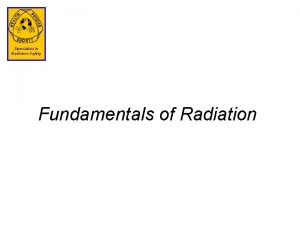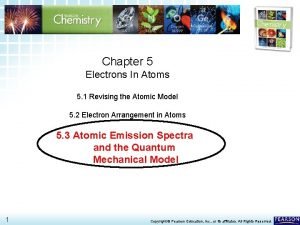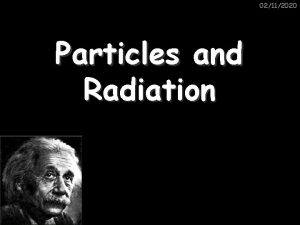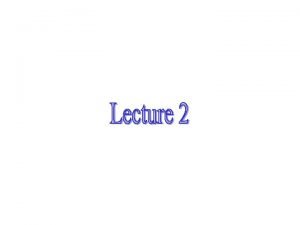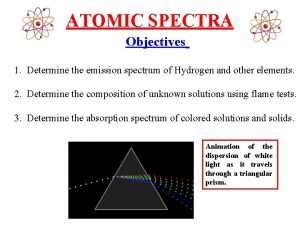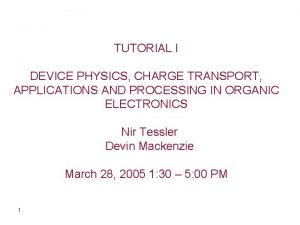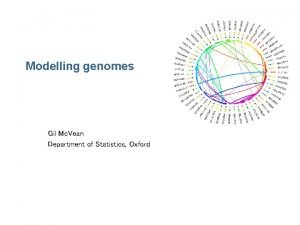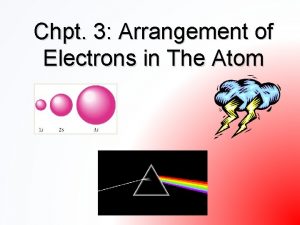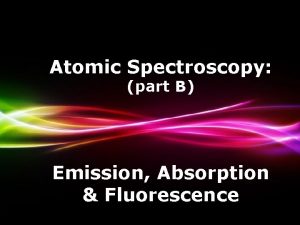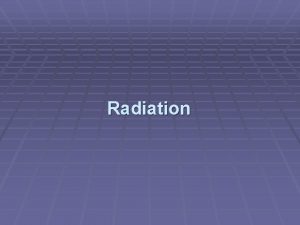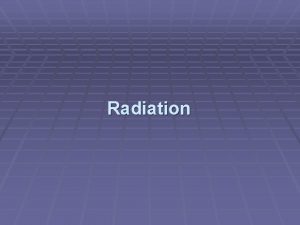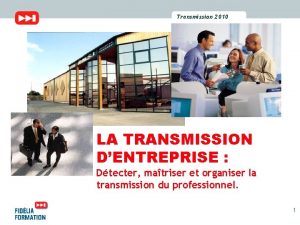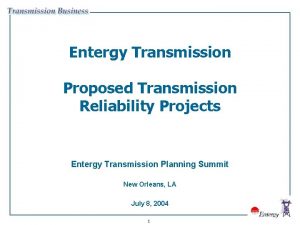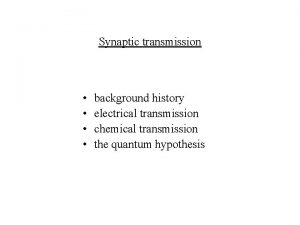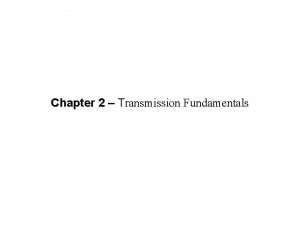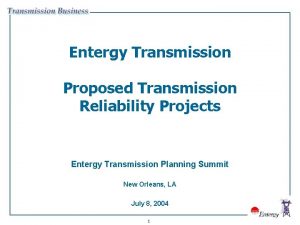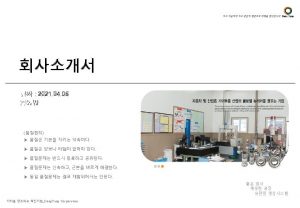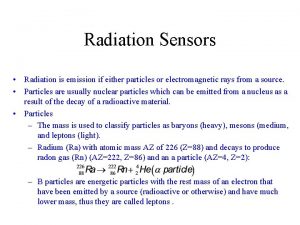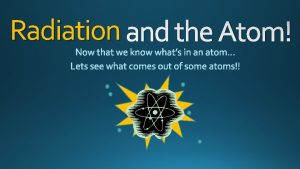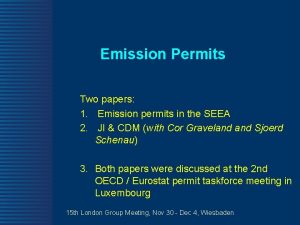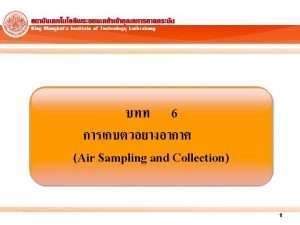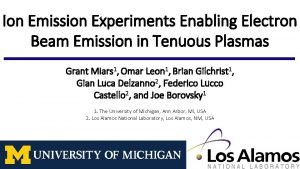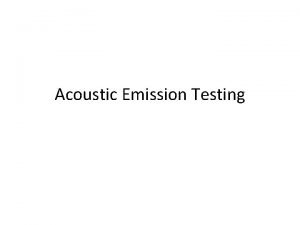Radiation Radiation Radiation is the emission or transmission























- Slides: 23

Radiation

Radiation • Radiation is the emission or transmission of energy in the form of waves or particles through space or through a material medium • Ionizing Radiation: It is the radiation that has ability to penetrate tissues and deposit its energy within them alpha rays, beta rays, xrays • Non-Ionizing Radiation: It has not sufficient energy to ionize matter like UV, Visible light

Sources of radiation Natural(Background) Artificial • Cosmic rays • Environmental • Internal body • Medical (x-rays) • Agricultural • Industries • Defense • Miscellaneous

Natural Sources • Cosmic rays: Originate in outer space • Environmental: It can be from terrestrial source like uranium, radium, thorium present in rocks and buildings • Internal from carbon-14 radioactive isotope present in living matter • These are “Background radiation”

Radium and Radon Hazards • These are important contributors to environmental radioactivity • Radon is 2% contributor of all cancer related deaths in Europe • Well & rain water can be very rich in radon • Epidemiological evidence shows a clear link between lung cancer and high concentrations of radon (EPA, 2003) • Radon concentration is usually measured in the atmosphere in Becquerel per cubic meter (Bq/m 3)

Artificial Sources (Medical) • Radiation have saved thousands of lives through the detection and treatment of conditions ranging from hyperthyroidism to bone cancer • Computed tomography (CT) scanners • Nuclear medicines (radiotracers)

Artificial sources (Agriculture) • Radioisotopes were used for producing high yielding crop seeds to increase the agricultural yield • Radiations from certain radioisotopes were also used for killing insects which damage the food grains

Artificial Sources (Daily routine) • Nonstick cookware is treated with gamma rays to keep food from sticking to the metal surface • Reflective signs that have been treated with radioactive tritium and phosphorescent paint • Television, mobiles, luminous watches

Artificial Sources (Defense) • • • At air ports use of cabinet x-ray system Nuclear weapons (Fission Bombs) Thermonuclear weapons Nuclear fall outs or nuclear accidents Chernobyl disaster in USSR 1986 Fukushima disaster in Japan 2011

Units of Radiation • Radiation equivalent man(Rem): It shows biological impact • Absorbed radiation dose (Rad): It is unit of absorbed dose per gm of tissue • Sievert (Sv): unit of absorbed radiation dose. Mostly in milli and micron

Some other units • Relative Biological Effectiveness (RBE): is the ratio of biological effectiveness of one type of ionizing radiation relative to another • Bacquerel


Immediate Effects • Radiation Sickness • Acute radiation syndrome Ø Alopecia Ø Removal of sub-cutaneous fat Ø Dark complexion Ø Softening of muscles

Delayed Effects • • • Leukemia Carcinogenesis Fetal development abnormalities Shortening of life Teratogenesis


Half Life? ?

Why it is a Public Health issue? ?

Radiation Dose • The individual dose limit for radiation workers averaged over 5 years is 100 m. Sv, and • For members of the general public, is 1 m. Sv per year.

Protection Measures • According to International Commission on Radiological Protection (ICRP): Ø Limit time for exposure Ø Reduce distance Ø Use of protective shields Ø Avoid unnecessary x-rays Ø Spend time in open atmosphere Ø Radiation dosimeters

Radioactive wastes • Type A: The radioactive waste from laboratory and academic institutions and decay in almost 100 years • Type B: Medium radioactive material from nuclear plants and retain decaying activity for almost 300 years • Type C: High level radioactive waste from nuclear plants and accidents and remained as it is for >300 years

Methods of Radioactive Wastes Disposal • • Reprocessing and energy reclamation Cooling and solidification Deep thick concrete trench disposal Geological isolation in mines or deserts

Reference: • International atomic energy agency (IAEA)

 Masers are microwave
Masers are microwave Metastable state
Metastable state The pcv system controls which exhaust emission(s)?
The pcv system controls which exhaust emission(s)? Energy emission
Energy emission Alpha emission
Alpha emission Complexe g emission
Complexe g emission Population inversion laser
Population inversion laser Oled cathode
Oled cathode Positron emission tomography
Positron emission tomography Emission vs ejaculation
Emission vs ejaculation Carbon emission
Carbon emission Energy emission
Energy emission Emission vs ejaculation
Emission vs ejaculation Partial periodic table
Partial periodic table Atomic emission spectra and the quantum mechanical model
Atomic emission spectra and the quantum mechanical model Ultra low emission burner
Ultra low emission burner Emission spectrum of sodium
Emission spectrum of sodium Beta radiation symbol
Beta radiation symbol Atomic emmision spectrum
Atomic emmision spectrum Thermionic emission current
Thermionic emission current Transition and emission probability
Transition and emission probability Emission line spectra
Emission line spectra Atomic absorption spectrophotometer ppt
Atomic absorption spectrophotometer ppt Emission and absorption spectra grade 12
Emission and absorption spectra grade 12
